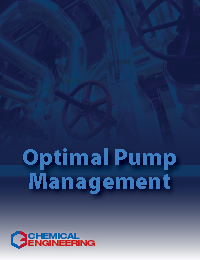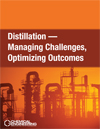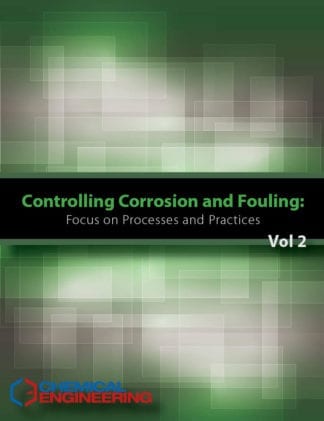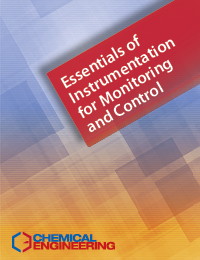Description
This Chemical Engineering guidebook contains dozens of practical, how-to engineering articles. The detailed engineering content featured in this volume provides guidance for the selection of many types of commonly used pumps, including positive-displacement pumps, centrifugal pumps, reciprocating pumps, vacuum pumps, sealless magnetic-drive pumps, low-flow pumps, peristaltic pumps and more.
Additional engineering articles include tips for implementing variable-frequency drives, sizing pumps, and evaluating sealing options.
This PDF guidebook provides practical, actionable recommendations for proper selection, installation, operation and troubleshooting, with an eye toward minimizing maintenance costs and unexpected downtime while ensuring optimum pump performance.
Available in a PDF format, 161 pages.
Aritcles and topics include:
- Principles of P&ID Development: The tips provided here will streamline efforts to develop piping & instrumentation diagrams
- Facts at Your Fingertips: Positive Displacement Pumps
- Facts at Your Fingertips: Measurement Guide for Replacement Seals
- Facts at Your Fingertips: Tubing for Peristaltic Dosing Pumps
- Facts at Your Fingertips: Flow Profile for Reciprocating Pumps
- Facts at Your Fingertips: Construction- Cost Indices
- Facts at Your Fingertips: Vacuum Pumps
- Optimizing Reciprocating Compressors for CPI Plants: Follow this guidance to improve the design, performance and reliability of these widely used machines
- Gear Units in CPI Plants: Follow this guidance to improve the selection and operation of gear units in CPI plants
- Fire-Water Pumps for CPI Facilities: Follow this guidance to improve the selection, design and operation of pumps handling water for firefighting and related systems
- Chemical Process Plants: Plan for Revamps: Follow this guidance to make the most of engineering upgrades that are designed to improve plant operations or boost throughput capacity
- Variable frequency drives: An Algorithm for Selecting Vfds for Centrifugal Pumps: Using this simple algorithm on a personal computer, engineers can evaluate competing scenarios to identify the most cost-effective and energy-efficient pump system design
- Sizing, Specifying and Selecting Centrifugal Pumps: Use these tips to determine preliminary pump sizing, to support cost-estimation efforts
- Lubricating Rotating Machinery: Follow this guidance to improve lubricant selection, process operation and asset reliability
- Use Simplified Lifecycle-Cost Computations to Justify Upgrades: The methodologies presented here can be used to set goals, and will enable performance comparisons among different plants or industry segments
- Remote Thermal Sensing: By making it easy to detect heat anomalies, thermal cameras and infrared thermometers support preventive and predictive maintenance
- Pressurized Piping: Sampling Steam and Water: Without proper systems, analysis of steam and water chemistry can provide erroneous results — with costly implications
- Plot Plan Design: Process Requirements: It is important to conceptualize plant layout in terms of both ideal location and optimal geographical positioning of equipment components
- Facts at Your Fingertips: The Impact of Off-BEP Pump Operation
- Lifecycle Costs for Capital Equipment In the CPI: Long-term equipment costs need to be fully considered in capital-cost assessments
- A Primer on Reverse Osmosis Technology: Desalination by reverse osmosis is a key technology for a water-constrained world. Discussed here is its use in industrial water treatment and drinking-water production
- Materials Selection In The CPI: An overview of the many factors to be considered when selecting materials of construction
- Rotating Machinery: What You Should Know About Operational Problems: Follow this guidance to improve the operation, safety and reliability of rotating machinery in chemical process plants
- Condition Monitoring for Rotating Machinery: This valuable insight into the performance of pumps and compressors will help improve operation
- Inline Viscosity Measurements: Process viscometers can help keep process control and product quality in check
- Piping-System Leak Detection and Monitoring for the CPI: Eliminating the potential for leaks is an integral part of the design process that takes place at the very onset of facility design
- Oil-Mist Systems: This primer discusses the pros and cons of open- versus closed-loop designs for lubricating pump and motor bearings
- Making Pump Maintenance Mandatory: Transfer pumps must be kept in optimum shape to handle harsh chemical processing operations
- Improving the Operability of Process Plants: Turndown and rangeability have a big impact on the flexibility and efficiency of chemical process operations
- Facts at Your Fingertips: Variable Frequency Drives
- Calculate NPSH with Confidence: Determining net positive suction head (NPSH) can be confusing, but with these guidelines, engineers can avoid the pitfalls of incorrect calculations
- The Benefits of Seal-less Pumps for Full Product ContainmentIn cases where full containment of dangerous and hazardous chemicals is necessary, seal-less pumps can provide many safety and operational benefits
- Condition Monitoring Methods for Pumps: Applying condition monitoring tests to pumps can save costs by optimizing overhaul scheduling
- Magnetically Driven Pumps: An overview: Understanding sealless pump technologies and their potential applications
- Mechanical Seals Update: Pharmaceutical and Food Applications: For applications that require cleanliness, be sure your centrifugal pumps have the proper seals




